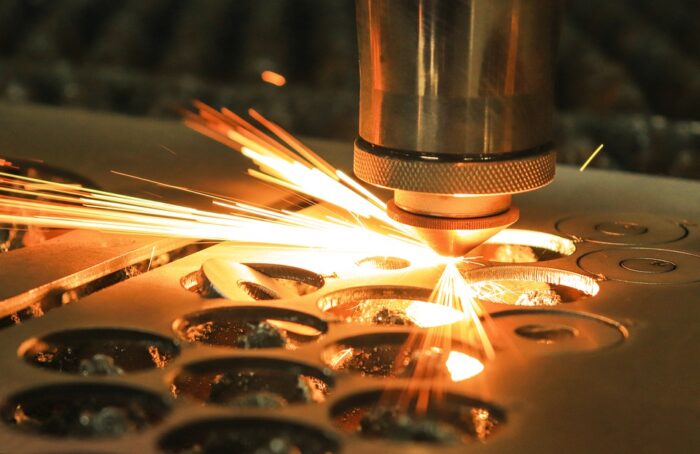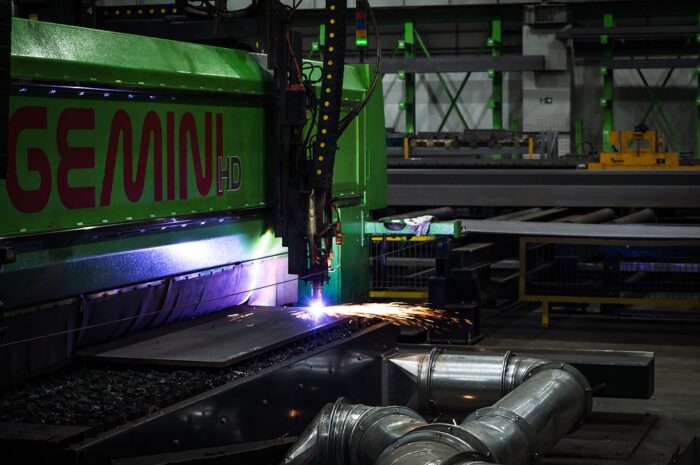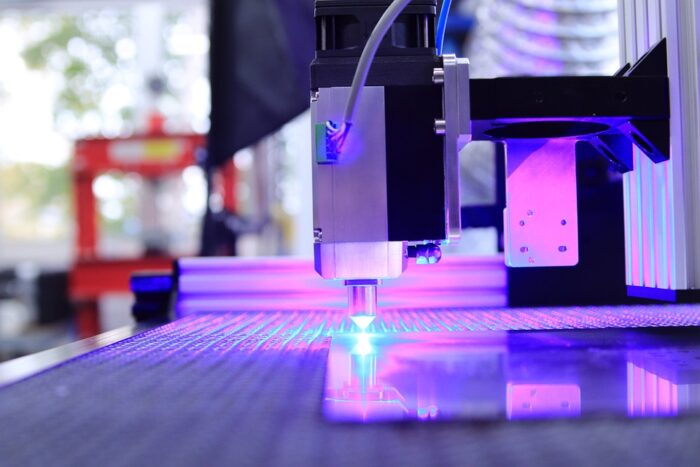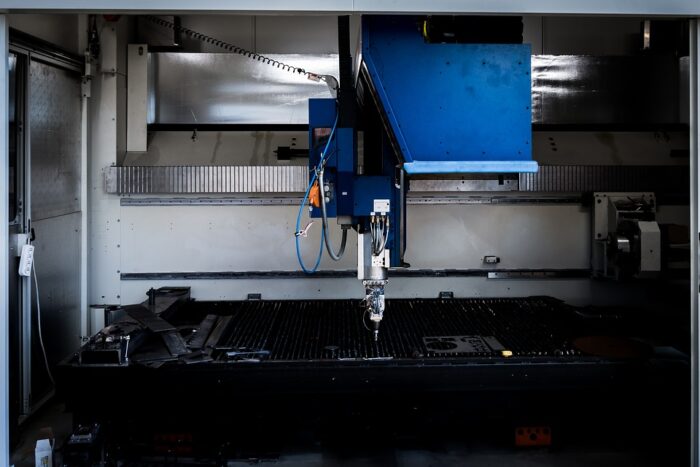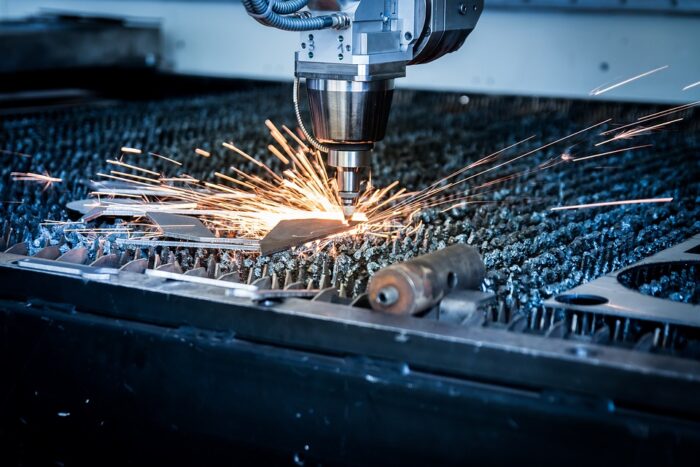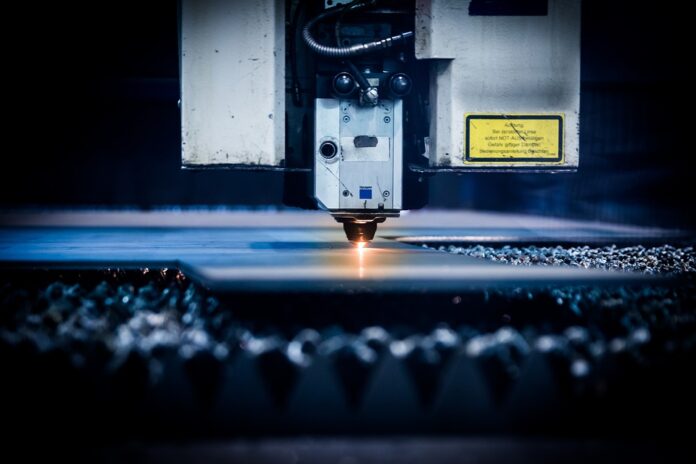
Even with easy access to digital marketing in 2024, Traditional advertising is still a very big thing. Marketing agencies still use direct mail, broadcasting, telemarketing, and, most importantly printing or engraving to reach a larger audience. But, traditional advertising has not stagnated over the years. It has been made easier, more efficient, etc. This is especially true for engraved graphics as laser cutters are more affordable and efficient than ever. However, getting into laser cutting might not be as easy as you think.
Fortunately for you, we took the time to do a little bit of research on what exactly you will need and understand so you can deliver reliable and high-quality products with laser cutting. Otherwise, you might not leave a good impression on some of your first customers.
After you go through this article, we hope that you will learn all of the essentials related to this topic and that you will be able to satisfy yourself or your customers.
What is laser cutting?
- Img source: pixabay.com
To fully understand how all of this works will first need to answer the question of how laser cutting works.
Well, basically, it is the act that utilizes a laser that has enough power to cut into a certain type of material. Which material you can cut into depends on the strength of the laser. It can be weaker to cut into lighter materials such as wood door plastic or it could be much stronger to cut into metals such as aluminum or even steel. But, more on that later. For more information, you can check https://www.steelproductsdirect.com/.
Additionally, there are different types of laser cutters. Some are larger and intended for industrial use while others are much more compact and can even be brought and used at home. Especially since these machines are much more affordable nowadays. You can probably get one for less than $300 and use it for your own purpose or you can even sell your products.
How does it work?
- Img source: pixabay.com
So, how does all of this work? How did we manage to turn these massive, power-hungry machines that were mostly used in factories into something that can be found in many households?
Well, to technological advances and with the help of much more effective lenses or mirrors, gas lasers can be focused much more accurately. The more focused the laser is, the easier it can cut or engrave on a material.
Of course, the power input in the machine also has a huge role in the final result. The more power is sent into the laser, the stronger the cut. Specifically, this is what differentiates an engrave from a cut. More power will result in a cut while less power will result in engraving.
Getting started
- Img source: pixabay.com
Since you now have a basic understanding of this topic, we can continue talking about what exactly you need to get started.
First things first, you will need to get yourself a laser cutter. There are a few ways you can do that.
The easiest way to get access to such a machine is to just buy it. Like we mentioned previously, you could probably find one from a cheaper brand that goes for around $200, $300, or $400. Naturally, these models are not exactly great and you will not get the highest quality products, but it is still better than nothing.
Worst case scenario, you can use this cheaper model to hone your abilities to cut and engrave.
If you do not feel like spending $300 on such a cheap model, you might consider borrowing one or paying for such services. Nowadays, such machines can even be found in schools or libraries. So, if your project is just a one-time thing, you will probably figure it out.
However, if your idea is to start a business around this, you will need to have a serious machine. You will need to find the right machine that can cut into the right materials. But, you also have to ensure that it has a proper laser tube with enough power and long service life.
What is also important for every fiber laser cutting system is its processing speed, processing quality, efficiency, maintenance costs, and overall performance as suggested by Dxtech.
Materials
- Img source: pixabay.com
Before you get your hands on such a machine, you should also learn which materials you can engrave. Most CO2 lasers can be cut into wood, plywood, paper, leather, acrylic, other types of plastic, cardboard, and other similar materials.
However, if you try cutting into aluminum, stainless steel, ceramic, glass marble, or anything like that, you probably will not have much success, especially if you are under 150 W. Machines with higher than 150 W usually are not meant to be used in households and they are much more expensive.
Fortunately, just because you cannot cut into these materials does not mean that you cannot engrave them. All of the above mentioned such as glass, stainless steel, and aluminum can be engraved or marked with an under than 150 W machine.
Training Period
- Img source: pixabay.com
Before you start accepting orders from your customers and selling them your products, it is recommended to have a trial/training period for at least a couple of weeks or a few months.
Getting just a little bit of insight into how these machines work will help you deliver higher-quality products. High-quality products are essential if you want to leave your customers happy.
But, do not waste too much money on buying materials. Find something that is disposable or extremely cheap and test your skills on that instead of real aluminum, wood or etc.
It might also be a good idea to resort to YouTube videos or online guides to ensure that you are doing everything properly.
Cracking the Cost Code of Laser Cutting
Venturing into laser cutting? While this technology promises precision and creativity, it’s vital to decode the costs involved, as there are different types of laser cutters. Here’s a succinct breakdown to ensure you cut (pun intended!) wisely and economically:
Material Matters: Wood, paper, and acrylic won’t burn a hole in your pocket. However, metals like aluminum demand a heftier budget. Tip: Dive into supplier research to pinpoint quality yet affordable materials.
Electricity Estimations: Remember, laser cutters are power hungry. Gauge the energy tariffs in your area and match it with your machine’s wattage. It’s an easy way to anticipate monthly costs.
Maintenance Mode: Like any tech, laser cutters need TLC. Allocate funds for routine tune-ups – cleaning lenses, mirror check-ups, and the occasional spare part.
Safety First: Investing in ventilation systems and safety gear, like goggles, is non-negotiable. It’s not just about compliance, it’s about ensuring a safe crafting haven.
Software Spending: While many design tools are free, sophisticated ones carry a price tag. Weigh the features against your needs.
Business Basics: For the budding entrepreneurs, overheads like marketing, workspace rent, and permits must be on the radar.
Treat this as your go-to checklist, ensuring your laser cutting journey is both exciting and economically savvy.
Cracking the Cost Code of Laser Cutting
Venturing into laser cutting? While this technology promises precision and creativity, it’s vital to decode the costs involved, as there are different types of laser cutters. Here’s a succinct breakdown to ensure you cut (pun intended!) wisely and economically:
Material Matters: Wood, paper, and acrylic won’t burn a hole in your pocket. However, metals like aluminum demand a heftier budget. Tip: Dive into supplier research to pinpoint quality yet affordable materials.
Electricity Estimations: Remember, laser cutters are power hungry. Gauge the energy tariffs in your area and match it with your machine’s wattage. It’s an easy way to anticipate monthly costs.
Maintenance Mode: Like any tech, laser cutters need TLC. Allocate funds for routine tune-ups – cleaning lenses, mirror check-ups, and the occasional spare part.
Safety First: Investing in ventilation systems and safety gear, like goggles, is non-negotiable. It’s not just about compliance, it’s about ensuring a safe crafting haven.
Software Spending: While many design tools are free, sophisticated ones carry a price tag. Weigh the features against your needs.
Business Basics: For the budding entrepreneurs, overheads like marketing, workspace rent, and permits must be on the radar.
Treat this as your go-to checklist, ensuring your laser cutting journey is both exciting and economically savvy.
Final words
At first glance, the idea of laser cutting and using such a machine can seem a little bit complicated and scary. But, as you get more and more into this business, you will quickly understand that it is actually quite simple, you just need the right tools and guidance.

